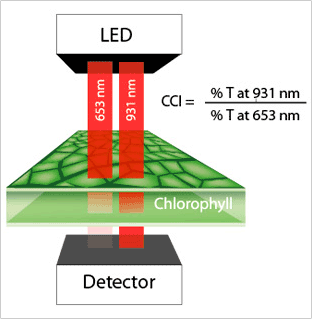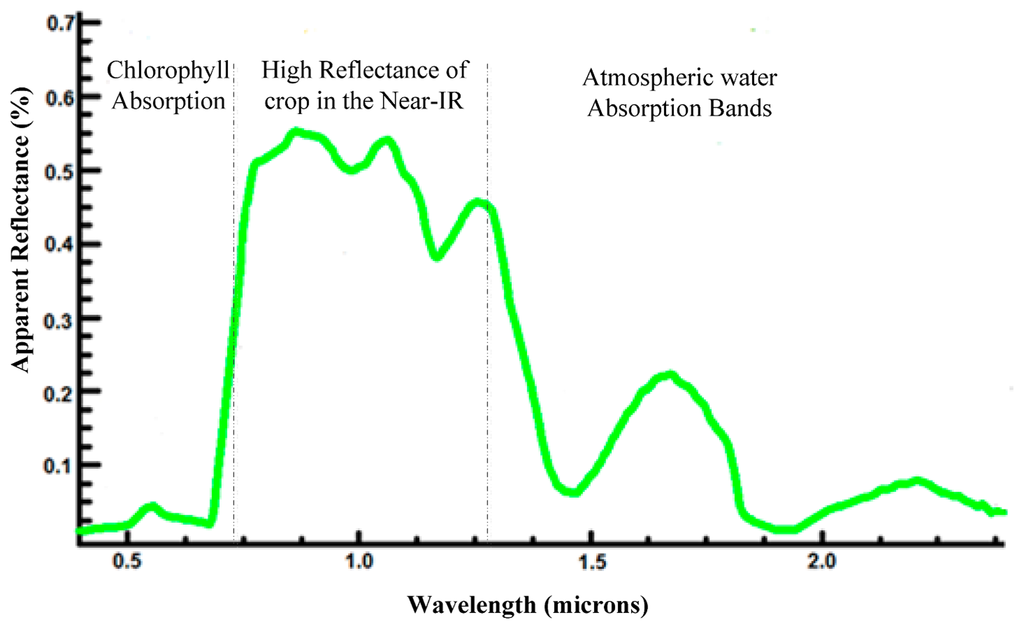Nitrogen is an essential element for plant growth and development. It is a major component of chlorophyll in plant leaves. Chlorophyll levels affect leaf area, leaf weight, plant size, and transpiration rate. Too little nitrogen can cause nitrogen deficiency symptoms affecting plant quality, pro- ductivity, and salability. Too much nitrogen is not good either, as nitrogen toxicity can occur in overfertilized plants, leading to stunted growth and a poor quality plant. Overfertilizing can be a source of unnecessary extra costs as well as an environmental hazard in the case of nutrient runoff.
The SPAD meter works by emitting two frequencies of light, one at a wavelength of 650 nm (red) and one at 940 nm (infrared). Leaf chlorophyll absorbs red light but not infrared, the difference in absorption is measured by the meter and termed SPAD. Therefore, the unit of measurement is SPAD, a ratio that is provided by the meter. The value does not give an actual chlorophyll or nitrate count Rather than saying, “there is this number of chlorophyll,” the meter value can be interpreted as, “this is a ratio of reflection vs. absorption.” The infrared absorbance is used to account for the leaf thickness.

Working of SPAD meter sensor

Absorbance of leaf chlorophyll
Additionally, plants cease to create chlorophyll once a certain threshold has been reached. Consequently, the meter cannot indicate an abundance of nitrate, only a possible deficiency. In terms of estimating nitrate content, the measured value is most useful when compared to a well fertilized control group.
 Vignesh Ravichandran
Vignesh Ravichandran
Discussions
Become a Hackaday.io Member
Create an account to leave a comment. Already have an account? Log In.